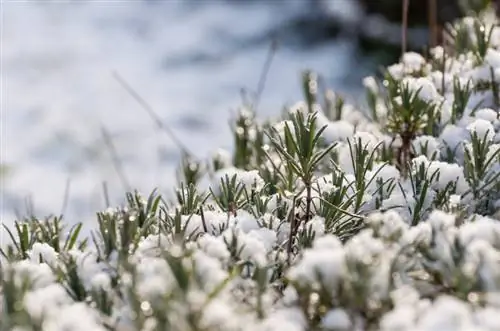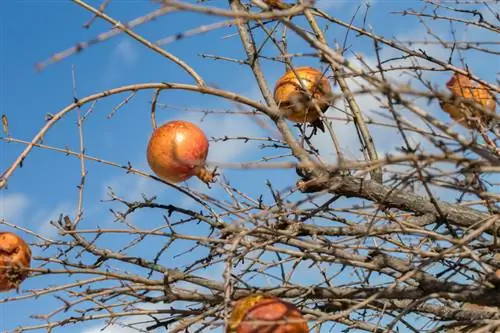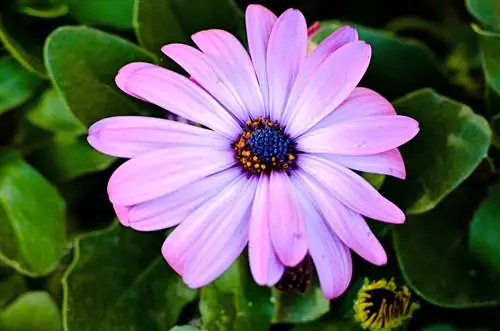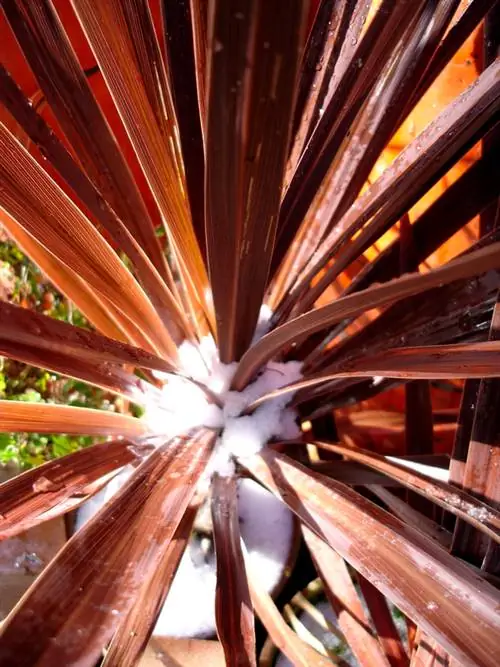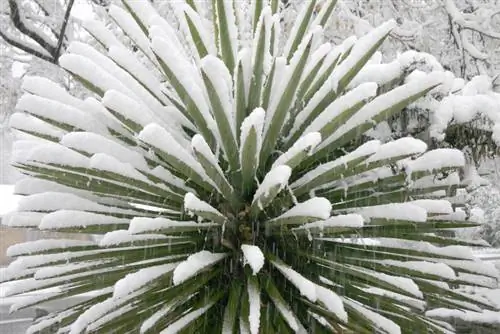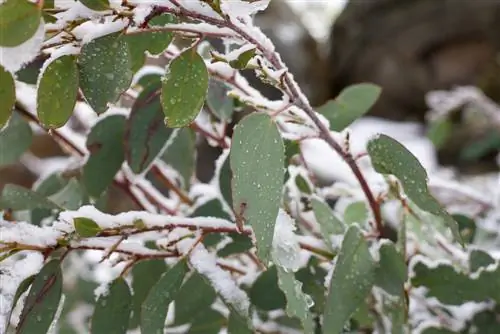- Author admin [email protected].
- Public 2023-12-16 16:46.
- Last modified 2025-01-23 11:20.
Many gardeners wonder in spring why the supposedly hardy lavender didn't survive last winter and froze to death. In fact, you can do a lot wrong when overwintering this rather unrobust plant - even if some guides claim the opposite. The most common mistakes include incorrect selection of varieties, incorrect location, lack of winter protection or too frequent/incorrect watering. In very cold but sunny winters, lavender also runs the risk of drying out.
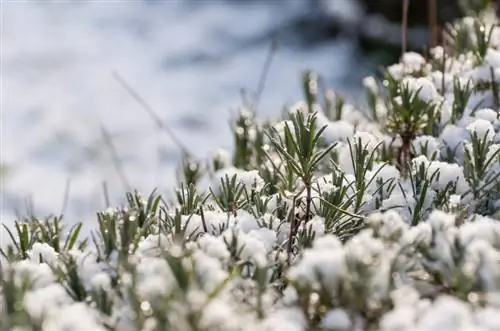
Which types of lavender are hardy and how do you care for them in winter?
Hardy lavender varieties such as Hidcote Blue, Munstead, Miss Katherine and Imperial Gem are suitable for garden planting. Provide protection from wind and moisture, cover the plants with brushwood or insulating mats in winter and avoid late pruning.
Hardy, winter-proof or frost-hardy?
First of all, when buying young lavender plants, you should pay close attention to the designations given regarding winter hardiness or frost hardiness. Many an uninformed garden center employee also confuses the terms “hardy” and “winter-proof” and thinks they mean the same thing. However, this is wrong, because winter-hardy varieties in particular are hardly suitable for overwintering in the garden. Plants that can only withstand temperatures below freezing for a very short period of time are also known as winter-hardy - but they freeze to death during longer periods of frost, even if they are well protected. Instead, choose winter-hardy or frost-hardy varieties, as these are significantly less sensitive to the stress of permanent frost and fluctuating temperatures.
It depends on the climate zone
However, the classifications “winter-hardy” and “frost-hardy” are no guarantee that your plants will survive the winter unscathed. After all, “winter” doesn’t mean the same thing in every part of Germany. Germany is divided into a total of seven cold zones, although the minimum temperatures can vary quite a bit. So if a lavender plant can be safely left outdoors in wine-growing zones, it will hardly survive the low or rapidly changing temperatures in some parts of Bavaria or on the coast. In this context, it is important to know that frost hardiness and winter hardiness do not mean the same thing. Frost-hardy plants survive even long periods of low temperatures quite well, but rarely in strongly fluctuating climates.
Winter-hardy varieties for the garden
This is particularly true for winter-hardy lavender, which can tolerate lower temperatures, but has difficulty with wildly fluctuating temperatures. Lavender is used to a Mediterranean climate, which includes more or less consistent climates than the drastic drops in temperature and weather changes typical of parts of Germany. Therefore, even with winter-hardy lavender varieties, you should ensure good insulation to protect the plants. Only the varieties of real lavender are considered hardy - and therefore suitable for planting in the home garden. This comes from mountain regions between 600 and 1600 meters altitude and is therefore more robust. The following varieties have proven themselves in German gardens:
- Hidcote Blue
- Munstead
- Miss Katherine
- Imperial Gem
However, this lavender should be grown in a protected place in winter, i.e. H. not in a drafty location, as the plants cannot tolerate (strong) wind.
Which lavender varieties are not hardy?
All other types of lavender are not winter-hardy, although Speiklavender and Lavandin are at least partially considered winter-hardy. However, these plants are better off overwintering in a cold house, just like the crested lavender, which is neither hardy nor winter-proof. Woolly lavender and fern-leaved lavender are also not suitable for overwintering outdoors.
Overwinter hardy lavender properly
From autumn - i.e. September / October - you should cover planted lavender with brushwood or leaves if possible. Special insulating cold protection mats (€19.00 on Amazon) such as coconut or fleece mats are also well suited. This is especially true for the more sensitive young plants; perennial lavenders are more robust in this respect. The cover not only protects the plants from the cold, but also from too much moisture - even in winter, waterlogging is fatal for lavender. Therefore, you should only water when the ground is not frozen and the water can drain away appropriately. If the lavender is covered with snow, you should definitely not remove it - the snow cover protects plants from the cold.
Don’t prune lavender too late
For many garden plants, autumn pruning is part of preparation for winter - but not for lavender. This should be pruned for the last time at the beginning of August at the latest, as the withered stems provide natural protection against the cold in the winter. A late cut also robs the plant of unnecessary energy, as many varieties then start to bloom again.
Be careful in frost and sun
The sun can also be dangerous for sun-hungry lavender in winter. Especially at temperatures around freezing point, on sunny days the moisture from leaves and soil evaporates faster than the plant can absorb the water. In this case, the plant is at risk of drying out, which is why you should check it regularly for signs of this and act accordingly. Lavender also doesn't like permanent frost and needs good protection from plant mats - especially when there is no snow.
Tips & Tricks
Potted lavender is always more susceptible than planted lavender, which is why different rules apply to it. If the pots are to be left outside (and perhaps only brought in for a short time), you can wrap them with protective mats and cover the lavender itself with brushwood.

